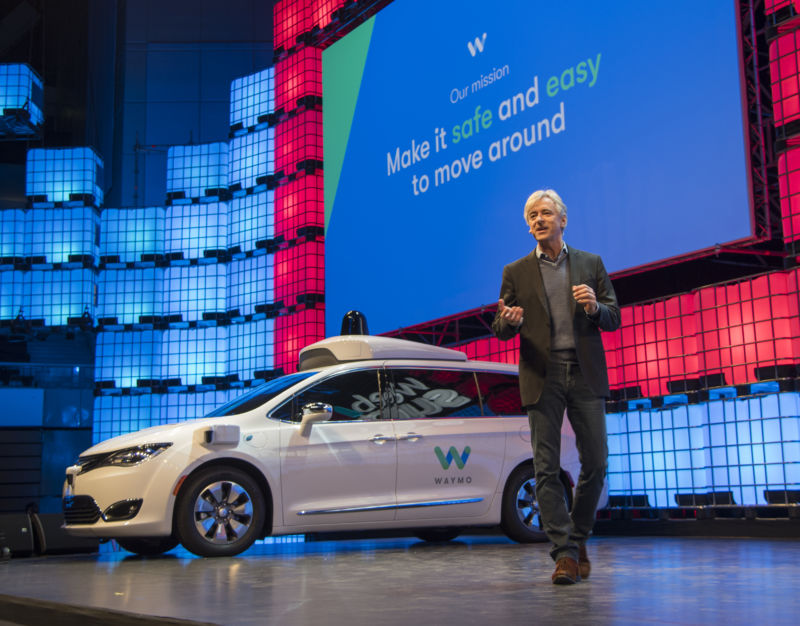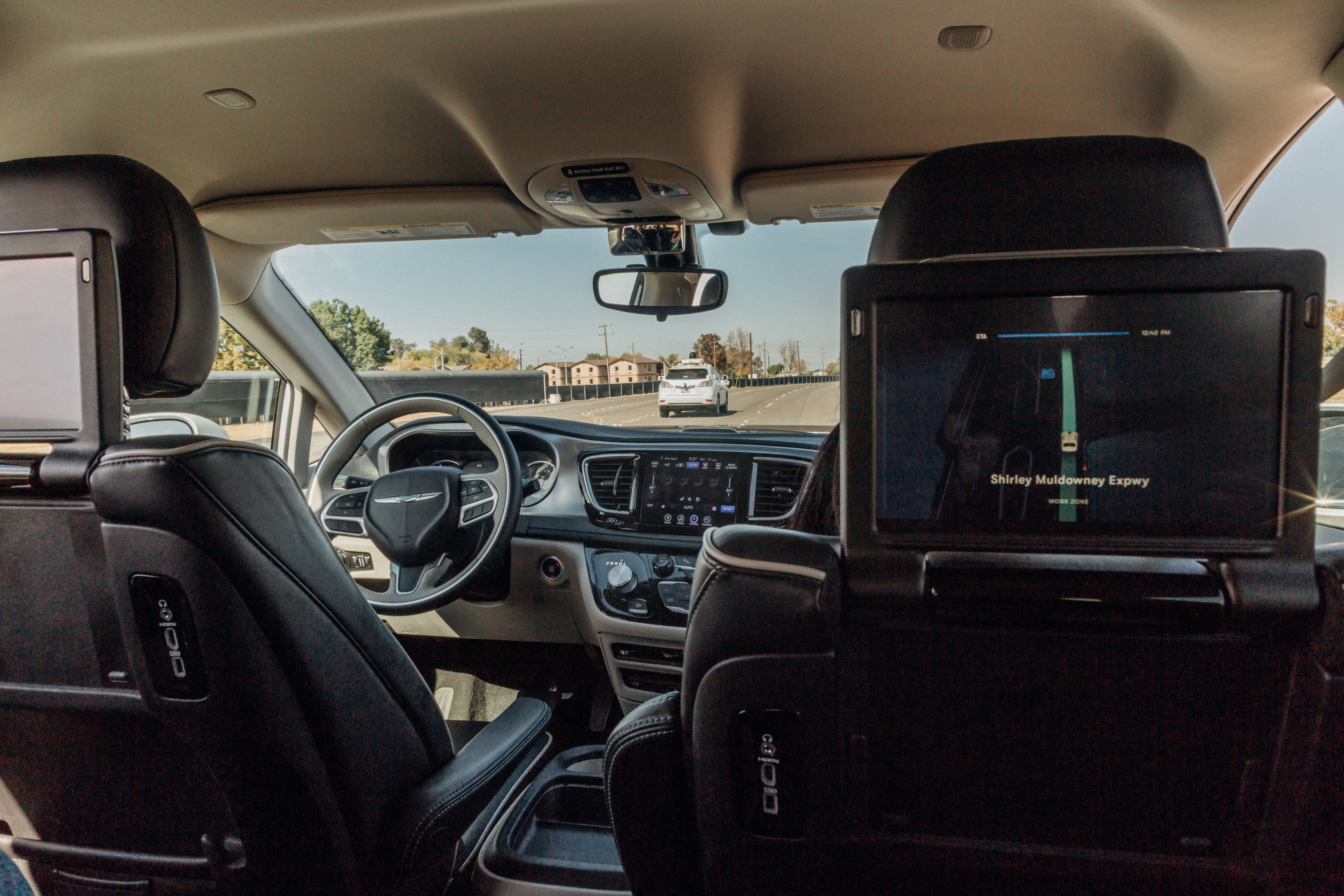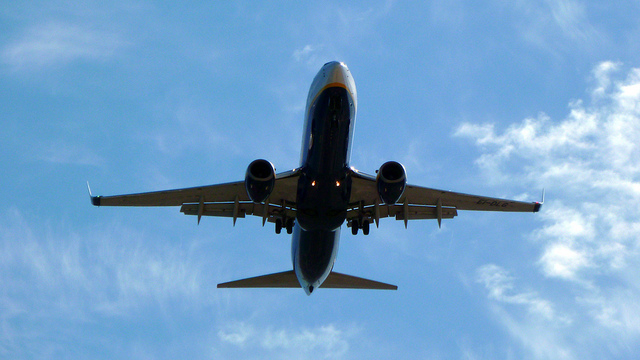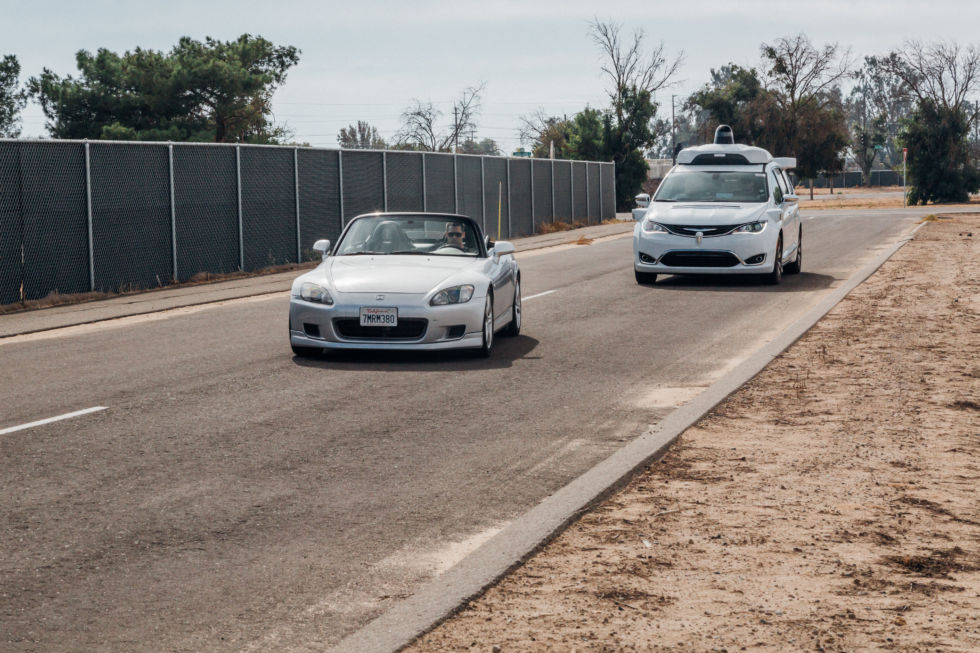Waymo's fully automatic taxis will appear this year.
Waymo is ready to run a taxi without drivers with minimal federal supervision.

Waymo, a Google Mobile project, is planning to launch a taxi without a driver in Phoenix in the next three months. Arizona. It will not be a trial project or a publicity stunt. Waymo plans to launch a publicly available commercial service - no man behind the wheel.
And so far, technology from Waymo has attracted surprisingly little attention from government officials, both in the city of Phoenix and in Washington, DC
')
If a company wants to sell a new aircraft or medical device, it will have to undergo a comprehensive study and prove its safety by the federal regulator. For ro-mobiles, there are no similar requirements yet. Federal and state laws allow Waymo to put robomobils on Arizona public roads without any formal approval.
And this is not an oversight. This is the result of a bipartisan consensus in Washington, concluded because of the opinion that tight surveillance of roaming vehicles will cause more harm than good.
"A very difficult task"

"If you think about what is required from a government organization to check the operation of the mobile and decide on its security, it becomes clear that this is a difficult task," said Ed Felten, an information technology specialist from Princeton, who was a technology adviser at the White House under Obama .
The federal government, under both Obama and Trump, doesn’t particularly care to regulate roaming vehicles. Instead of introducing new rules for security, Felten says, officials tried to "ensure that safety rules for robots do not make it difficult for them to enter the streets."
RoboMobiles need to meet existing safety regulations, the “Federal Motor Vehicle Safety Standards” (FMVSS). But in practice, this is not such a big problem. Waymo plans to overcome it by simply using Chrysler Pacifica vans for its service, which already meet these standards.
Meanwhile, Congress is considering a bill that should simplify the production of robotic vehicles that do not fully comply with FMVSS standards. This will allow GM to produce a car without a rudder next year.
This mild approach to regulating activities infuriates some security advocates.
“I think it’s just unbelievable,” says Katie Chase, head of the Highway and Automotive Safety Supporters, commenting on the tendency to loosen regulation.
Mary Cummings, nicknamed "Missy", a professor of engineering at Duke University, agrees with her. "I think it is absolutely shameless not to demand any checks before putting them on the road."
But for now, the demands of these activists remain unheard. Partly because federal regulators are not going to slow down the introduction of technology capable of saving many lives in the long run. Partly because they believe that commitment will force companies to behave responsibly. Partly because no one is sure how exactly robobombs can be adjusted.
In terms of ro-mob, “there is no consensus about what security is or how to provide it,” says Bryant Walker Smith, a lawyer at the University of South Carolina.
In other industries, stricter rules

Aircraft production is very strictly controlled
To imagine how a robust and strict rules platform works, it is useful to examine how the federal government regulates other sophisticated and security-demanding technologies. Cummings did this in a recent paper comparing the regulation of airplanes, medical devices and automobiles.
Aircraft manufacturer must comply with the rules of the Federal Aviation Administration (FAA) at the planning stage of the aircraft. Together, they make up a plan that includes “a project timeline, a list of necessary points for moving on to the next phases, ways to meet requirements, test plans, and other project management information,” Cummings writes. The FAA participates in all stages of the development process, confirming that the specified tests pass successfully, before allowing the aircraft to go on the market.
If the FAA is involved in the process from the very beginning, the Food and Drug Administration (FDA) usually waits until the medical device is ready for human testing, and then intervenes.
Prior to clinical trials of a first-of-its-kind device, the manufacturer must provide detailed technical information to the FDA, including “device description, drawings, components, specifications, materials, operating principles, analysis of potential failures, intended use cases, patient data, instructions, warnings, requirements device training, clinical evaluation criteria and test parameters, results of animal testing or previous clinical experience. ” Then the creator of the device carries out tests, transmits the data to the FDA, and waits for the approval of the agency before putting the product on the market.
Waymo won't have anything like it. The company held informal discussions with government officials at the federal, state and local levels. But there is no formal process that would require a company to send information about its technology and test results to regulators from Phoenix or Washington. The law simply does not require Waymo to prove that its robotic technology is safe before putting cars on the road.
Careful approval of airplanes and medical devices is expensive. Cummings says it can take up to eight years to bring the new model to the market. A survey of companies producing medical devices showed that the FDA takes an average of four and a half years to sign an authorization to use a device (the process at the FDA is faster than the FAA, in particular, because the agency does not interfere in the process before until the product is fully developed). The launch of a medical device on the market costs an average of $ 94 million.
Robo Mobile proponents claim that slowing down the development of Robo Mobile can lead to the loss of more lives than this process can save. In 2016, more than 37,000 people died in accidents on the highways, many of which were due to human error, so robots have the potential to prevent thousands of deaths in the coming years.
Problems with the regulation of robots

The car cuts Waymo's robility mobile on the Castle test track as part of its technology testing.
Even security advocates, such as Chase and Cummings, do not mean that cars should be subjected to such stringent checks, as is the case with airplanes and medical equipment. But they would like to see that the government is taking a more active part in verifying unmobiles - before releasing them onto public roads.
But Ed Felten from Princeton wonders if this is realistic. He points out that there are unique obstacles in the testing of robotic vehicles.
“The number of incidents or victims per car traveled must be very, very small,” he says. Drivers, people are involved in a fatal accident about once every 100 million miles. Therefore, in order to determine that the safety of a robotic car is not lower than a human driver, it is necessary to understand how it handles rare situations - such that a human driver will face, perhaps once in a lifetime.
“To understand that it’s safe, you need a huge amount of simulations and tests under controlled conditions,” says Felten. “It’s hard to imagine how the government will be able to do this.”
Chase, for example, is in favor of experiencing the vision of a rover mobile, so that they show that they "can see and react to what is happening on the road." It is not clear, however, how useful this will be in practice. Such possibilities of perception are, of course, necessary for a fully autonomous robotic car, but they are far from enough to prove that programs driving cars are no more dangerous than a human driver.
And while Cummings told me about the Waymo machines, “no tests in the real world were done,” it was unfair to the company. Last year, I traveled to a California testing ground where the company places cars in hundreds of controlled scenarios. I watched how the Waymo car slowed down when the other one cuts it, stops when the “movers” dropped a bunch of boxes in front of it, let the car drive out of the parking lot.
Perhaps federal regulators could come up with tests that Waymo engineers did not think of. But on the whole, it’s hard to believe that they could come up with a more rigorous set of tests than the company is already conducting in the California desert and other places.
As a result, the only way to check how the mobile phone behaves on real streets with people will be to put it on real streets with people.
Waymo could act more openly

That's what Waymo’s critics are right about, the fact that the company wasn’t open enough about its trials.
In accordance with the approach of the Tramp administration, which is to reduce regulation, companies are invited (but not required) to send a report detailing the security-related robomobiles. Waymo was the first company to send such a report this year.
When I spoke to Katie Chase in August, she was biting about the reports from Waymo and other automakers. “They are more like glossy advertising brochures than a data set,” she said.
“We need information on Waymo,” said Henry Jassny, a lawyer from the Society for Road Safety and Automobiles Supporters, shortly after the publication of the Waymo report last year.
Waymo claims in a statement that their 43-page report actually provides a wealth of information about the safety of their vehicles.
“We intend to tell the public and regulators about this new technology, which, in our opinion, can save thousands of lives and about the meticulous process we use to test it,” a company spokeswoman wrote in an e-mail last week. She argues that the Waymo safety report "provides a detailed description of our test programs, both in the text sections describing the tests and in the notes, which specifically describe certain types of tests specifically designed to be informative for regulators and the public."
And indeed, the Waymo report includes a long list of test scenarios executed in the company. For example, Waymo says that its cars are capable of coping with a scenario called “a completely autonomous vehicle is approaching a braking lead vehicle.”
But this report did not include detailed information that would allow an independent analysis of the Waymo test process. What are the exact test parameters? How many times did they chase them away? How did the car behave? This is not a report.
The same is true for testing cars on public roads. Waymo passed nine million miles of testing on such roads [14 million km], many of which drove cars with a driver behind the wheel. But the public has very little information about how these tests were passed. This is especially true for Arizona, in which (unlike in neighboring California), companies developing robomobils do not have to send regular test reports.
For example, in August, The Information published an article in which it was written that some Phoenix residents were irritated by the need to share roads with Waymo cars, which often behaved uncertainly where a live driver would not behave. A resident of Mountain View posted a few videos on which Waymo cars stopped in situations that would not embarrass human drivers.
Do these messages mean that Waymo software has a big problem? Or is it a few too much bloated individual accidents? It is difficult to say without detailed data on how robomobils behave in the real world. Waymo undoubtedly has such data; she just did not make them available to everyone.
Personally, it seems to me that Waymo will eventually disgrace critics. The company began to develop robomobiles long before other competitors, so she had the opportunity to calmly and gradually move towards commercialization.
But tests are always more reliable and thorough with independent supervision. The public has every reason to be skeptical about them until the company proves the safety of their cars, backing up words with comprehensive data and independent analysis. Under current federal and state laws, a company is not required to do this. But perhaps it is in her best interest to do it.
“If the company gives out more information about how its cars behave, it will do her good, because ultimately it is necessary that people trust cars, and this trust can be earned by proving their safety,” says Chase.
If Waymo launches a commercial service without releasing meaningful data on machine performance, or not allowing an independent technology review, this will set a precedent that will allow other companies — perhaps less conscientious — to do the same.
According to the rules, "anyone can get a car on the road," says Chase. “Joe Garazhkin can build such a car, put it on the road, and then it will fall into a terrible accident.”
Model reliable company
If the FDA-style formal check fails, what can regulators do instead? Bryant Walker Smith advocates using what he calls a “trustworthy company” model for regulating robots. Instead of prescribing detailed technical standards for robots, he says regulators should concentrate on approving the development and testing processes of the robots themselves.
Smith wants “government officials to say: Do these companies deserve trust? Do they honestly convey information? Do their statements confirm? ”
“Regulation is not just rules or approvals,” notes Smith. “Regulation is all the tools available to officials: investigations, inquiries, revocation of permits, penalties for misrepresenting information.”
In this model, regulators will not focus on a direct assessment of technology, but on ensuring that companies that produce robobies support corporate culture and a set of processes that put safety first. Regulators should force companies to prove in detail the safety of their vehicles, backing this up with facts.
So far, Waymo is not doing anything, at least in public. Since the launch of the company almost two years ago, it has emphasized the security of its technology. “Security is in the heart of the Waymo mission and everything we do,” a company representative wrote to me by mail.
But the company has not yet released enough data to confirm its security statements. We know that Waymo registered millions of miles on the roads of Arizona, but we know little about how their cars behaved.
Waymo need not just to create a safe technology, but also to convince the public of its safety. This can be helped by greater transparency both about the technology and about its testing.
Source: https://habr.com/ru/post/425487/
All Articles